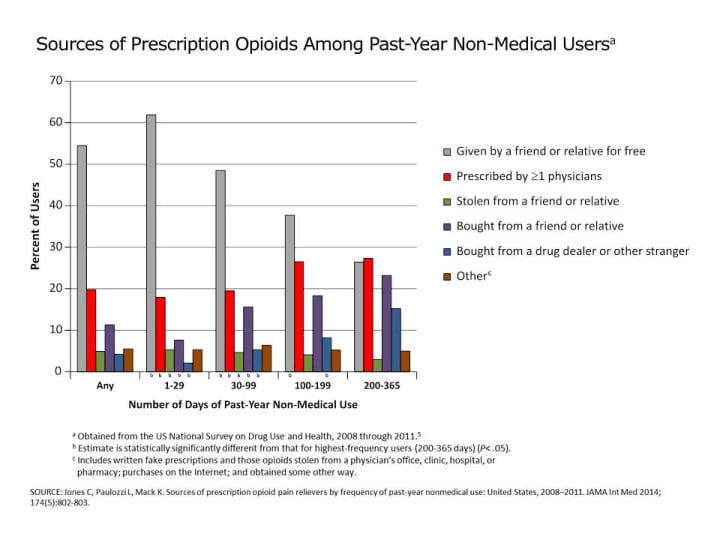Jerry works seventy hour weeks as a desk-bound middle manager for a big virtual corporation. He barely sleeps at night and wakes up with a three-ton anvil attached to his body and brain. His exercise regimen includes jogging on concrete and long bouts of elliptical.
Jerry is a great friend. He agreed to help his friend Barry move into his first bachelor pad after a draining divorce today, even though he had planned to stay home and relax on his only workless day.
The move goes well until the two carry an oddly shaped dresser up the stairs, which forces Jerry into a weird twisted position. A strange pull sensation lights up his lower back. He almost drops the load but manages to make his way into the apartment.
"I think I tweaked my back."
The sharp pain throbs more after each step.
"Your walk aged fifty years, man, hold on let me go look for something. "
Barry reaches into a box labeled "Pharmacy." Jerry hears the sound of plastic containers pushed into each other by his hand. He pulls out an opaque bottle with a large white top.
"There it is! Take this Vicoceton when you get home, you'll sleep like a baby. Go see my doctor tomorrow."
Jerry gets home and pops the oval shaped pain candy. The excruciating pain disappears half an hour later, only to wake him up again in the middle of the night. He goes to the clinic first thing in the morning.
The doctor walks in in his white coat three hours later, stethoscope around his neck, and sits down in front of the bag-eyed manager, awkwardly bent on the hard chair to minimize the lower-back pulse.
"What seems to be the problem?"
"I hurt my back helping a buddy move, kept me up most of the night. I think I need an MRI. "
"Say no more."
He scribbles on his prescription pad.
"Take up to 12 of these powerful, highly effective painkillers a day. Come back when you finish the bottle, and we will reassess the situation.
"You mean I don't have to get an MRI."
"Nope."
"That's amazing!"
Jerry stops by his local pharmacy to pick up the opaque container labeled Vicoceton 5/500mg.
He takes two. The pain subsides half an hour later along with a few other discomforts. Jerry feels amazing, for once, but for how much longer?
Outlook of an Epidemic

#firstworldproblems
Opioids, or pain killers, are mediatic hot sauce right now. The Center for Disease Control estimates 91 Americans overdose every day, an under reported value according to University of Virginia Public policy and economics professor Christopher J. Ruhm. (American Journal of Preventive Medicine)
Opioid sales nearly quadrupled between 1999 to 2014.
"There were about 300 million pain prescriptions written in 2015." — Irina Koffler, senior analyst, specialty pharma, Mizuho Securities USA (CNBC)
These scribbles on a pad make for a $24 billion market according to Koffler. Eighty percent of the supply of opioids gets consumed by Americans, followed closely by other Western countries.
"If you include Canada and Western Europe, consumption of global opioid supply increases to 95 percent, so the remaining countries only have access to about 5 percent of the opioid supply," said Vikesh Singh, assistant professor of medicine and director of the Pancreatitis Center at Johns Hopkins University. (CNBC)
Non-Hispanic Caucasian adults over forty years of age use opioids the most, according to the CDC. The statistic highlights a hint of western white mediatic drama in contrast with the crack epidemic of the eighties, which targeted and criminalized African Americans almost exclusively, but that's a story for another day.
Opioid Access

Opioid Overdose Data
Pain medication abusers typically get them from a friend or family member, but overdose statistics vary.
These people get opioids using their prescriptions (27 percent), from friends or relatives for free (26 percent), buying from friends or relatives (23 percent), or buying from a drug dealer (15 percent). Those at highest risk of overdose are about four times more likely than the average user to purchase the drugs from a dealer or other stranger. (CDC)
Some users accuse the mediatic hype of demonizing the only way for them to be functional, productive humans, yet a recent ground-breaking study suggests the solution to be fleeting at best.
This long-term trial by Erin Krebs and the Minneapolis Veterans Health Care System examined 240 opioids using veterans for chronic back and knee pain compared with those treated by non-opioids.
"The data do not support opioids' reputation as 'powerful painkillers'," Dr Krebs told the medical publication The Back Letter. (Sidney Herald)
Do the Risks Outweigh the Benefits?

A wound that needs stitches will not heal with a band-aid. These results coupled with the rapid rise of opioid-related sales and deaths suggest this attractive solution to most types of pain is ineffective long term, outdated, if not dangerous. Some opioid users will switch to heroin, unable to afford their pill habit anymore. And they say Cannabis is the gateway drug!
New education and management strategies for professionals and patients alike must shatter the conventional wisdom currently inflating the death toll and health care debt on a daily basis. The Jerry character mentioned earlier had many other red flags before his body turned pain mode at full blast.
His injury was the outcome of consistent bad habits over an extended period. Several biological and lifestyle factors can lead to pain. One must identify and address these root risk factors instead of relying on potentially addictive, short-term treatment.
The school system could teach self-health care at a young age too. Wouldn't you rather learn how to care for your body as a kid instead of spending a fortune when you are older and broken?
The substantial cost of caring and repairing your body through various health services ranging from regular personal training to kinesiology, nutrition, and pain neuroscience, amongst many, often repels pain sufferers, who either have no insurance or one that barely covers the tab.
A New Hope
Mobile technology and artificial intelligence innovation bring a new light to health care. Patients can collect their data with Bluetooth devices and connect with qualified professionals worldwide who can interpret the data to adjust the treatment safely and efficiently, then expand the discussion with other pain-users also sharing their experience.
Anybody can now access knowledge at a fraction of the price without diluting the quality of the content.
The power for change lies in the pocket sized devices linked to the big invisible network, as we rise through the greatest revolution in communication since the invention of the printed press during the Renaissance.
Reading List
CDC — Prescription Opioid Overdose Data
CDC — Opioid Prescription Data
CDC — Increases in Drug and Opioid Overdose Deaths — United States, 2000–2014
Dying from an overdose is more common than you think.
Geographic Variation in Opioid and Heroin Involved Drug Poisoning Mortality Rates
Landmark long-term study shows opioids no good for back pain.
About the Creator
Alex C-B
Pieces of myself through facts and fiction - A fallible human of the digital era. I bought the ticket, missed the ride, then tripped down the rabbit hole and woke up stranded with you in this strange matrix.






Comments
There are no comments for this story
Be the first to respond and start the conversation.